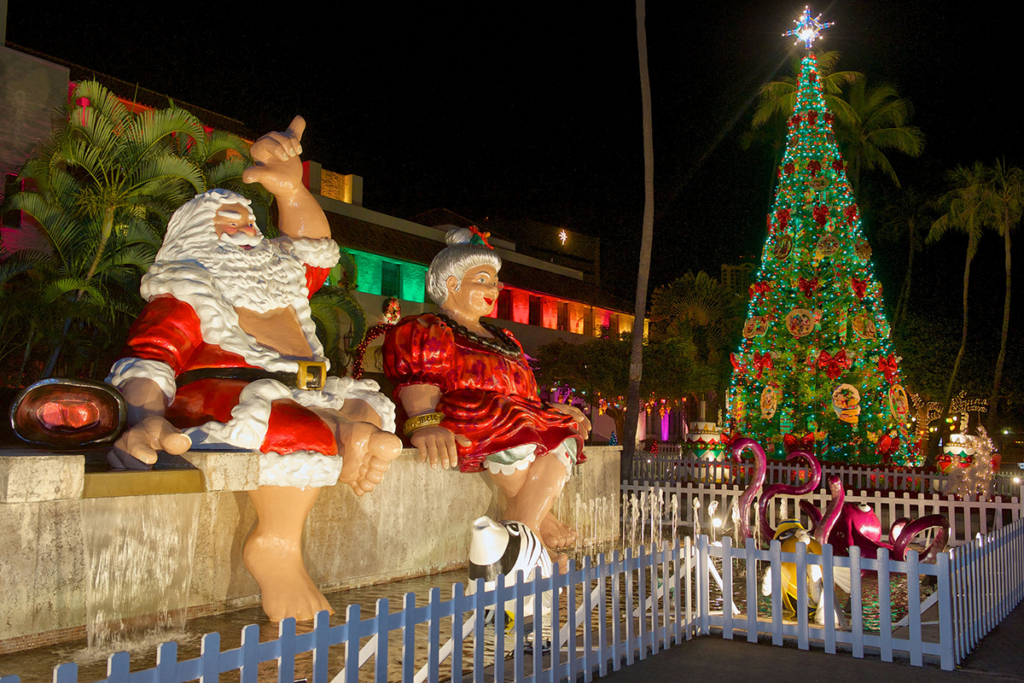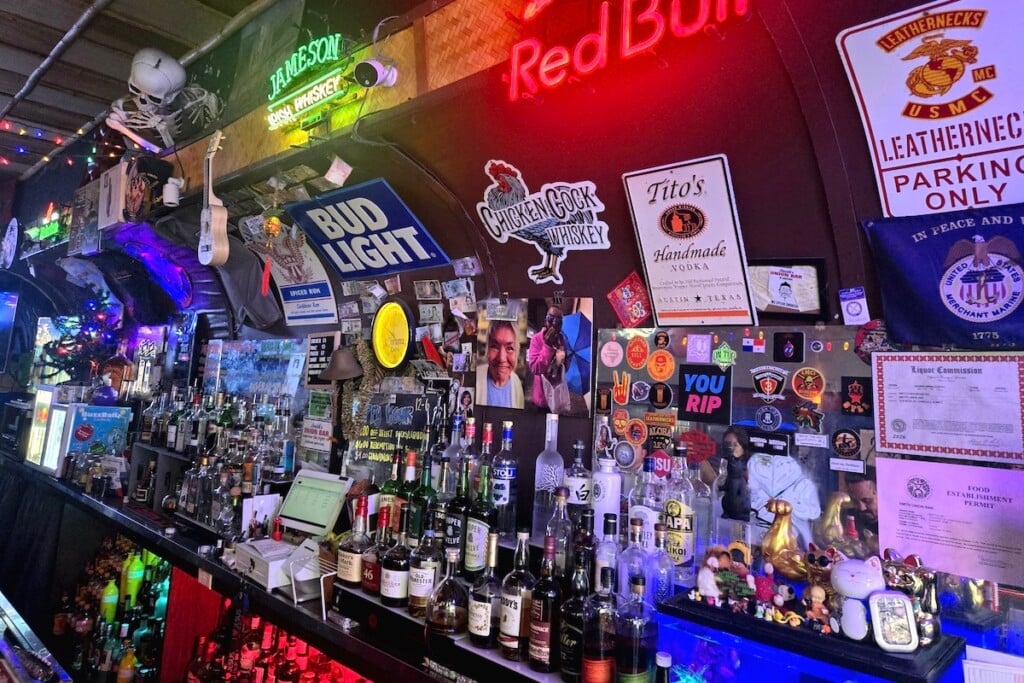2008 Hale Aina Awards
What are the best restaurants in Hawaii? We asked a huge panel of experts—our readers.

Photo by Monte Costa |
Can you imagine a celebration without food? It’s a vital part of any gathering. The annual HONOLULU Magazine Hale Aina Awards are given out in this same spirit: relishing the fresh ingredients available in the Islands, rejoicing over the skilled chefs, the polished service, the world-class wines, and most of all, toasting to the pleasure of spending time with loved ones.
DUO

Photo courtesy of Duo |
Part of a $55 million renovation of the Four Seasons Resort on Maui, Duo was created in an area that had formerly been the Pacific Grill. The name Duo refers to steak and seafood, explains Mark Simon, director of marketing for the resort, and is also a coy nod to the fact that it also serves breakfast. Our Hale Aina voters have embraced the new emphasis on high-end steak, naming Duo Best New Neighbor Island Restaurant, gold.
Executive chef Roger Stettler says he tries to "cook understandable food. Not too many flavors, and fresh, local ingredients. We’ve been using a lot of organic products, mostly grown on the Big Island." The beef, such as an organic New York steak, is imported. True beef aficionados will order the Japanese Kobe, so rich that it’s served in four- and six-ounce portions. If you’re feeling decadent—and who isn’t, when you’re at a Four Seasons?—you can add lobster tail, blue crab lump meat or scallops to your entrée.

Photo courtesy of Duo |
|
|
as apple compote, Eggs Benedict with crab meat and a thickly sliced bacon that has its own following. "We have people come in saying they have been thinking about this bacon for six months," says Simon.
PHUKET THAI
Best Restaurant for Spicy Food, Gold
If you’ve had to wait in line at Phuket Thai, you’ll be happy to hear that a third location opened in December, on the corner of Kamakee and Queen streets. Owners Naret and Sheryl Sihavong started their McCully restaurant 10 years ago, then added one in Mililani. The newest location will also be Phuket Thai’s largest, reports general manager Edwin Ohta, with an outdoor seating area and a total capacity of 150 people, about double that of the McCully branch. The menu will be similar to the other locations, but because there is more storage space, the chefs will be able to offer more specials. Ohta also notes that a full bar is planned, with a liquor license expected by late January.

photo by RAE HUO The snapper is a spicy specialty at Phuket Thai.
|
"We have different levels of spiciness, from no spice at all, to Thai hot, to even hotter than Thai hot," says Sihavong. "You would not believe how many chili peppers some people want in their papaya salad." She says that if the food turns out to be too spicy, "we can remake the dish and tone it down a notch." Still, be careful when asking for more heat. "Our medium is pretty hot," says Sihavong. It’s an addictive pursuit. "Once you start eating a dish hot, you really can’t go back to mild."
MARIPOSA
At Mariposa, executive chef Marc Anthony Freiberg took the helm in May 2007, and was ready to make his mark. He revamped the lunch menu, reasoning the place is so busy at lunch that word would quickly spread about the new dishes. And it has, winning a gold for Best Business Lunch.
Freiberg knew he shouldn’t change some of the favorites—the popovers and smoked salmon salad—but introduced new temptations, such as an ahi melt with melted fontina on sourdough bread, served with kobucha chips. He also created more entrée salads, such as a local spinach with Surfing Goat Dairy cheese. "Seventy to 80 percent of our lunch clientele are women," he explains. "So I kept things on the lighter side."
He’s now focusing on dinner items, using his passion for Italian cuisine to whip up plates of braised short ribs over polenta, for example, and a peppercorn-seared ahi over caponata.
"I like the way Italians eat—it’s simple, and uses the best ingredients, fresh from their backyard," he says. "I pick up inspiration there, and at the same time, I’m trying to be innovative. So it’s Old World techniques, with local ingredients."
 |
|
Photo by Monte Costa The day-boat catch with ratatouille at Cassis is served on a rosemary brochette. Chef Mavro says it’s classic, but "not just comfort; also excitement." |
CASSIS BY CHEF MAVRO
Local food champion George "Mavro" Mavrothalassitis was a multiple winner at this year’s Hale Aina Awards event (for more on the evening, view the Hale Aina Awards Gala.) His downtown brasserie, Cassis by Chef Mavro, took home a bronze for Best New Oahu Restaurant; his King Street restaurant, Chef Mavro, won Restaurant of the Year, bronze and was also a finalist for Best Wine Program.
Running the two restaurants keeps chef Mavro busy; he works lunch time at Cassis, and dinnertime at the King Street restaurant, where the chef de cuisine is Kevin Chong.
At Cassis, executive chef Ben Takahashi helped create the bistro’s new lunch menu, which starts at $12 and features salads, sandwiches and pizza. The duo of small cheeseburgers, topped with cheddar and fried green tomato, has been a popular order, but the best seller remains something that was already on the menu: Flounder Grenobloise, a classic example of French bistro cooking. Mavro notes that the flounder is a Big Island aquaculture product; he’s also using Hawaii-raised crabs, oyster, mussels and sea asparagus, in addition to favorites like goat cheese and watercress. "Everything is from scratch," he says. "We make the ketchup. We grind our own spices to make garam masala, bake our own lavosh."

Courtesy of Lahaina Grill The Sunken Chocolate Cake at the Lahaina Grill is topped with Kona coffee ice cream. |
LAHAINA GRILL
David Paul’s Lahaina Grill is now going by the moniker Lahaina Grill, but it’s just a name change, chef/owner Jurg Munch assures us. Open since February 1990, the bistro this year claims its 15th consecutive win as Best Maui Restaurant.
As with Duo, Munch notes a steady diner interest in beef, which he sources from the Midwest. He also works with Hana Fresh, a 7-acre farm on Maui, to procure organic local produce. "Baby potatoes, poha berries, fennel, bok choy, Swiss chard … we basically buy whatever they can produce, then we’ll create our specials based on what’s fresh," Munch explains. The from-scratch triple berry pie is still the best dessert seller after 18 years, redolent with black currant, raspberries and blueberries.
Newer offerings include caviar. "We found a wonderful producer in California; it’s farmed and all natural. We’re offering it with traditional melba toast and a bit of sour cream, and also on ahi tartar. Munch is also expanding the range of cheeses offered, and, in a true nod to the times, converting much of his building to solar power.
SORABOL
They’re running on chili power at Sorabol, where you can say "whoo!" not just at breakfast, lunch and dinner, but 24 hours a day, seven days a week. The Korean restaurant invests heavily in chili peppers, says manager Jay Cho, who adds that the kimchee stew and stir-fried squid are popular. But what would you really need a flame-retardant bib for? That would be the spicy barbecued pork. Patrons particularly love it at night, Cho says. "I think greasy, spicy food goes well with drinks."
ALAN WONG’S RESTAURANT
Restaurant of the Year, Gold
This year, Alan Wong’s Restaurant won this honor for the ninth time. The restaurant also garnered a gold Hale Aina for Best Service and a silver award in the category of Best Desserts. Alan Wong’s Pineapple Room took home a bronze for Best Business Lunch. But despite the accolades, chef/owner Alan Wong is as modest as ever.
"I’m happy and proud for the entire staff. They are the ones bussing the tables, washing the dishes, cooking and serving the food. These awards are for the team."
 PHOTO BY Rae Huo Chef/owner Alan Wong with restaurant managers Kathy Kawashige and Kerry Ichimasa. |
But surely, Wong is part of the story, too. He values goal setting, both for himself and for his staff, and cites the book In Search of Excellence. "You enjoy the moment, and then you go back and improve on yourself."
Take pastry chef, sous chef Michelle Karr. "Nine years ago she was an intern with us. She didn’t know how to hold a knife or a frying pan," says Wong. "She’s not afraid to try something, and has come up with about 10 variations on the Wailua Chocolate Sampler."
What ingredients are currently most interesting to chef Wong?
"Everyone is crazy about the Japanese Wagyu beef—it’s outrageously expensive and outrageously full of fat. You can’t cut it up as an 8-ounce steak; 2 ounces is enough. I was just playing around in the kitchen with it, trying to figure out what to do with it. You want to showcase it and keep the flavors simple."
In the coming year, Wong says he may travel more to Europe, visiting and tasting his way through some excellent wine-producing countries. We can’t wait to see what ideas he—and all of our award-winning chefs—comes up with.










